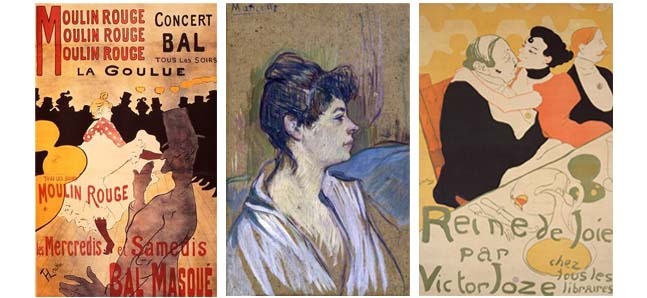Montmartre meets Shibuya
Bunkamura brings Paris to a corner of Tokyo

'Toulouse-Lautrec et son cercle' The Bunkamura Museum of Art
Posted: Wed Dec 16 2009
‘Toulouse-Lautrec et son cercle’ (‘Toulouse-Lautrec and his circle’) is The Bunkamura Museum of Art’s current exhibition highlighting the famed French artist, his influences and his clique of companions who inhabited the infamous area of Paris known as Montmartre.
The exhibit is full of a healthy dose of Lautrec’s more well-known prints, such as the iconic Aristide Bruant series, and lithographs done from his sketches of Moulin Rouge personalities and regulars. However, what really makes even Lautrec’s most iconic pieces seem refreshed and relevant in new ways is the frame of reference brought on by his fellow artists and their environment.
Throughout the collection, a leitmotif of influences, classmates, teachers and contemporaries studded with heavy-hitting names such as van Gogh, Degas, Manet and Gaugin, offer a reminder that Lautrec is a product of one of the most controversially productive times in art of the last 200 years.
Though superficially it may be easy to brush off Lautrec and his fin de siècle Parisian cronies as glorified graphic designers and sketch artists, in fact (as this exhibition proves), they were much more than that. By producing work for regularly published art and literary magazines, creating book covers for some of the most subversive writers of the era and breaking beyond the barriers of what were considered good bourgeois morals, the Montmartre group captured the freewheeling, and at times very self-aware, social culture of the cabarets, stages and popular performing arts of the époque.
The collection on show also achieves a canny balance between many of the artists’ commercial work and their more personal pieces: adverts for garish performances at the Folies Bergère are set next to figure studies of individuals instrumental in the daily workings of Montmartre and its society.
A nod is also given to the Montmartre Post-Impressionist influences from Middle-Eastern and Asian art. Particular standouts are a striking katagami cut-paper-like woodcut by Félix Vallotton (among other works on loan from the Machida City Museum of Graphic Arts), and a Byzantine mosaic-themed Alphonse Mucha portrait of Sandra Bernhardt that unintentionally resembles Ayumi Hamasaki in three-quarter profile (from a large number of works from the Kawasaki City Museum).
What one comes away with, after viewing the at times exhaustively detailed cross-section of Lautrec’s hothouse environment of Paris’ bohemian heart, is a portrait of an immensely talented artist who lived a life of incredible joy and crippling illness, surrounded by a rare mix of artists, friends and influences that could have only produced such simultaneously utilitarian and aesthetically boisterous work.
‘Toulouse-Lautrec et son cercle’ is now showing at The Bunkamura Museum of Art until Wed Dec 23.
Images
Henri de Toulouse-Lautrec
(Left) 'Moulin Rouge, la Goulue' 1891, Einen & Tini Miura Collection, Kawasaki City Museum
(Middle) 'Marcelle' 1894, Musée Toulouse-Lautrec, Albi (Inv. MTL 171)
(Right) 'Reine de joie' 1892, Museum and Archives Kyoto Institute of Technology
Tags:
Tweets
- About Us |
- Work for Time Out |
- Send us info |
- Advertising |
- Mobile edition |
- Terms & Conditions |
- Privacy policy |
- Contact Us
Copyright © 2014 Time Out Tokyo










Add your comment